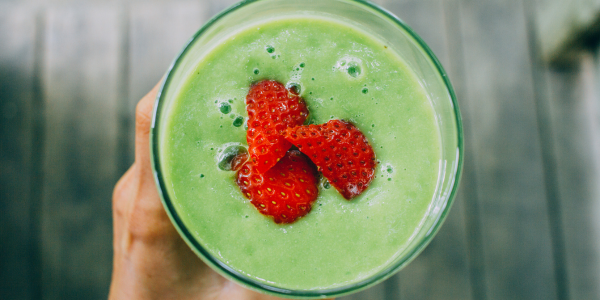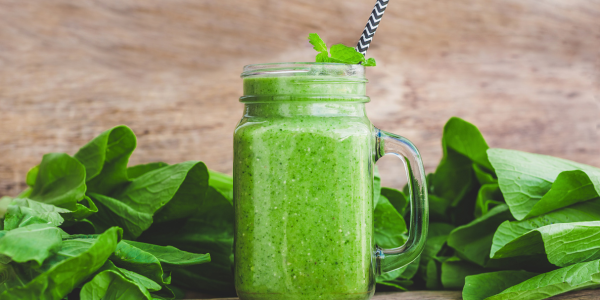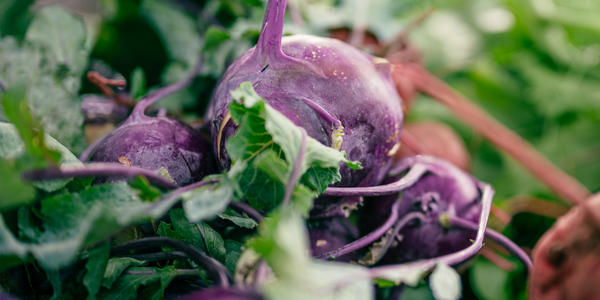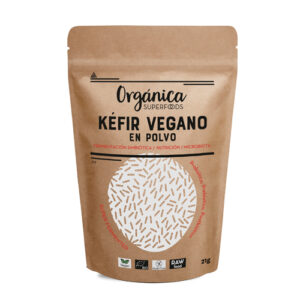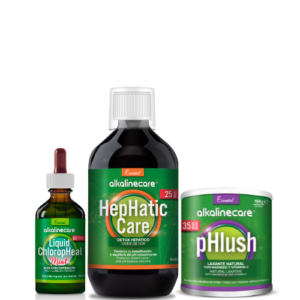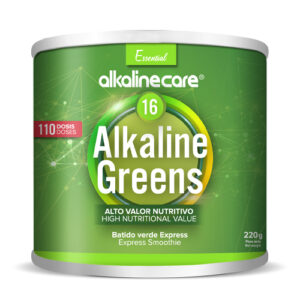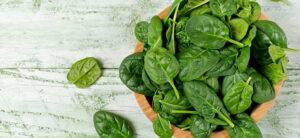We already know the health benefits of green juices. However, not all green juices, which are healthy, have an alkalizing effect on our body. Prepare your perfect alkaline green juice!
What does an alkaline green juice consist of?
It is a drink made from fresh vegetables and/or fruits that once ingested produces an alkalizing biochemical effect on our body. That is, it helps balance the pH of our interstitial fluid, which under optimal conditions should be around a pH of 7.3 – 7.4. And, in addition to alkalizing, it has a detox and revitalizing effect at the same time.
Although most green juices should have this alkalizing effect on the body, several important details must be taken into account for this to be the case:
- It is important that the green juice contains approximately 80% green leaves and the rest can be fruit, although it is not mandatory. It is not advisable for the juice to be exclusively based on sweet fruits because it could have an acidifying effect.
- What type of fruit and how much to choose for the juice is another key factor. Low glycemic index fruits are the best option to ensure that the juice, in addition to being green, takes care of the delicate acid-base balance.
- Tubers and roots. In some recipes you can also add tubers and roots such as carrots, sweet potatoes, raw beets or even raw potatoes.
- Drinking fresh juice will also determine the impact it will have on our body. It is important to drink the juice fresh, because if we keep it for too many days it could start to ferment.
How to make your perfect alkaline green juice
First of all, it must be taken into account that the perfect green alkalizing juice must meet the following conditions:
- Balance pH
- Nourish
- Regenerate
- Detoxify
Choose Cold Press System
You’re probably already familiar with the term cold press. This refers to the method used to prepare the juice, a system that uses a wheel that rotates slowly and presses the food, thus extracting the juice from its interior. By operating at low revolutions, the food preserves its nutritional and organoleptic properties as much as possible. In addition, we forget about the oxidation caused by the blades since the cold press prevents it.
There is a big difference between a cold press extractor and a conventional blender with steel blades. The classic blender, in addition to being much more aggressive when processing the ingredients, destroys a large part of its properties, squeezes a very small part of the food, making juice production enormously expensive.
Imagine putting some spinach in the blender. How much would you need to obtain a few drops of juice? I think a huge amount!
Requirements for your perfect alkaline green juice
There is no single formula for making juices, but this simple guide will help you make green juices effectively. There are 3 requirements that I consider essential.
- Simplicity: Mixing too many ingredients makes it difficult to assimilate, so it is preferable not to combine more than 5 ingredients.
- Healthy: Following these steps will ensure that the juice is healthy, nutritious and alkalizing. All ingredients should be fresh, raw, organic if possible and even better if they are local.
- Good flavor: It is also very important that the flavor of the juice is pleasant, otherwise we may end up giving up drinking them.
Make your perfect alkaline green juice
Choose an aqueous and alkalizing base
That is, choose a vegetable that contains a lot of water to be the main ingredient in our juice. For example: cucumber, celery, tomato, coconut water.
Choose one or two green leafy vegetables
Do not mix more than two types of green leaves to make your juice. A little trick that I really like is to combine green leafy vegetables with aromatic herbs, which give the juice a delicious aroma. For example: spinach + basil (fresh mint), celery leaves + cilantro, kale + parsley, etc. It is also important that you vary the type of green leaf because (although all are rich in chlorophyll, vitamins, minerals and antioxidants) each variety provides different nutrients and phytochemicals.
Choose an alkalizing fruit
The ideal is to choose a fruit with a low glycemic index. If we choose a very sweet fruit, then we must add a very small amount. For example: coconut, lime, lemon, grapefruit, tomato, apple, pear, watermelon, melon, fresh pineapple. It is also advisable not to mix more than one type of fruit in the juice to promote better assimilation. The sweet roots can be used to replace the fruit. For example: we can add carrot or beet to our juice instead of a piece of fruit.
Add a superfood (optional)
If you want to enrich your juice even more, you can add a superfood or ingredient with specific properties. For example: a teaspoon of Alkaline 16 Greens. And to make your juice more complete, you could add a small piece of ginger and/or fresh turmeric to take care of your digestive system and help reduce inflammation.
Chlorophyll
And finally, before drinking it, add a few drops of liquid Chlorophyll to make your green juice even more oxygenating and enhance its antioxidant and regenerating effect.
Now you know the basic steps to make your perfect green juice. You just need to get to work and discover the power of alkalizing juices!
